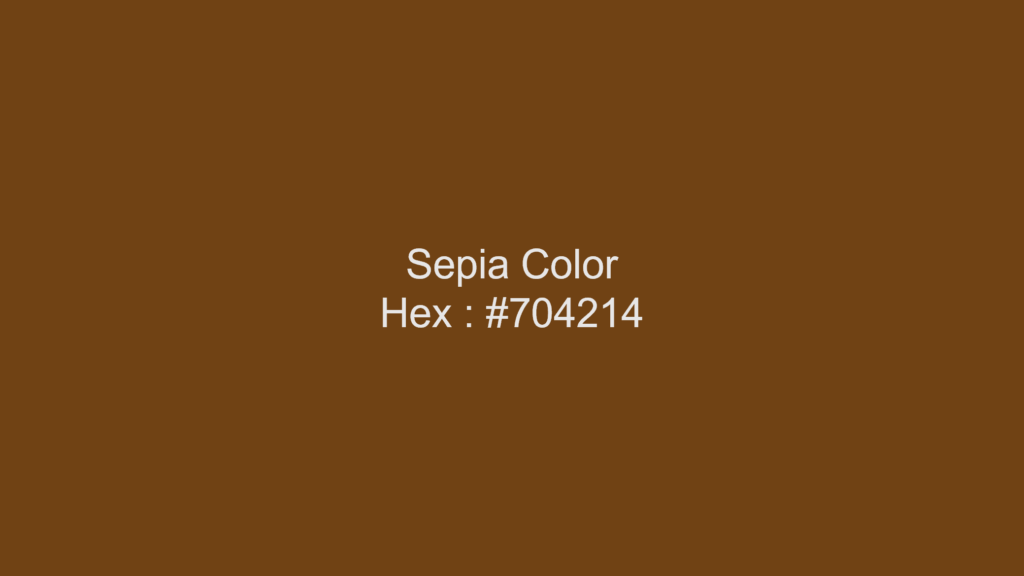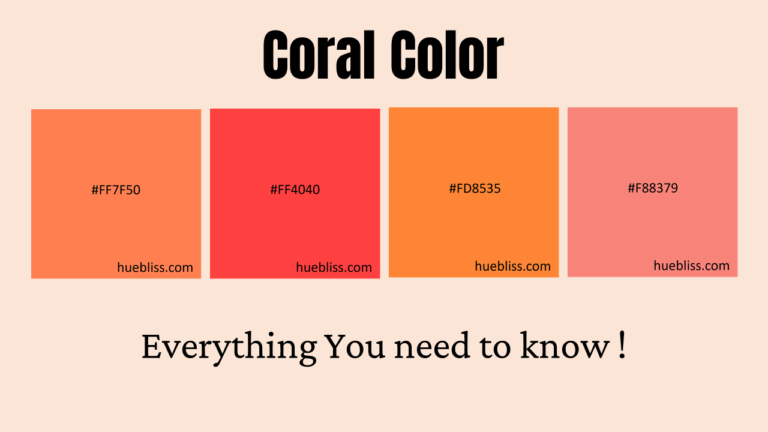Sepia color, also known as sepia tone, is a warm, brownish-gray hue that has a rich history in photography and graphic design.
The name “sepia” comes from the ink of the cuttlefish, which was traditionally used in early photography to create a monochrome image. Today, sepia color is often associated with vintage and nostalgic aesthetics, evoking feelings of history and timelessness.
In photography, sepia is used to create a sense of warmth and nostalgia, while in graphic design it can be used to add a sense of elegance and refinement.
In this blog post, we will explore the history, uses, and techniques for creating sepia effects in both photography and design.
What color is sepia ?
The color code for sepia can vary depending on the specific shade or tone being used. However, in digital media, sepia is often represented by the RGB color code (165, 105, 79) or #704214Hex code.

These color codes represent a warm, brownish-gray hue that is similar to the natural color of the sepia ink used in traditional photography.

HSL (Hue, Saturation, Lightness) color code for sepia can also vary depending on the specific shade or tone being used. However, a common HSL color code for sepia is (25, 45%, 60%).
Another color code system that can be used to represent sepia is the CMYK (Cyan, Magenta, Yellow, Black) system which is commonly used in the printing industry.
The CMYK color code for sepia can be (0, 35, 49, 35) This code represents the percentage of each color that should be used to achieve the desired sepia tone.

Historical significance of Sepia color or Sepia Tone
The historical significance of sepia in photography dates back to the early days of the medium. In the 19th century, early photographers used a variety of techniques to create monochrome images, including the use of the sepia ink from cuttlefish.
The sepia ink was used as a toner to change the color of black and white photographs, giving them a warm, brownish-gray hue. This was particularly popular in portrait photography, as it lent a sense of warmth and richness to the image.
The use of sepia in photography continued to evolve as the technology improved. With the introduction of film in the late 19th century, photographers began to experiment with different toning techniques to create a variety of colors, including sepia.
This allowed photographers to not only create monochrome images but also to create images with a specific color palette.
In the early days of the medium, sepia photographs were often considered to be more artistic and refined than their black and white counterparts.
This association with art and refinement helped establish sepia as a popular choice for portrait photography and other formal images.
As color photography became more prevalent in the 20th century, the use of sepia in photography declined, but it never entirely disappeared.
Today, sepia is used as a technique to create a vintage or nostalgic look in photographs. The use of sepia in photography continues to be popular as it evokes feelings of history and timelessness.
Why were old photographs Sepia Toned ?
Old photographs were often sepia-toned because of the limitations of the technology and materials used in early photography.
In the 19th century, when photography was in its infancy, the most common process for creating a photograph was the “wet plate” process. This process required the photographer to coat a glass or metal plate with a light-sensitive emulsion, expose the plate to light in the camera, and then develop the image in a darkroom.
One of the limitations of this process was that the final image was a black and white negative. To create a positive print, a second negative was made by contact printing the original negative onto light-sensitive paper. This second negative was then used to make a final print.
One of the ways to achieve a more appealing image was to add color to the final print. This was done by toning the print, which involved immersing the print in a solution containing a chemical that would react with the silver in the image to create a new color.
One of the most popular toning solutions was sepia toner, which is made from the ink of the cuttlefish and gives the print a warm, brownish-gray hue.
The sepia toning process helped to create a more visually appealing image, as it added a sense of warmth and richness to the image.
Additionally, the sepia tone helped to conceal some of the defects that were often present in early photographic prints, such as scratches and blemishes.
In summary, sepia toning was used to make the black and white photographs more visually appealing and give them a warmer and more natural look, as well as to hide some of the defects of early photography.
Sepia color in graphic design
Just like in photography, sepia is also used in graphic design to create a vintage or nostalgic look. The warm, brownish-gray hue of sepia can add a sense of elegance and refinement to a design, making it perfect for use in branding, packaging, and other applications where a timeless aesthetic is desired.
One of the most common uses of sepia in graphic design is in the creation of vintage-style posters, logos, and other marketing materials.
The sepia color can add a sense of nostalgia and history to the design, making it more interesting and appealing to the viewer.
In addition, sepia can also be used to create a sense of warmth and intimacy in a design, making it suitable for use in wedding invitations, photo albums, and other personal projects.
Another way sepia is used in graphic design is to create a sense of timelessness and elegance. For example, in luxury branding, sepia can be used to evoke feelings of refinement and exclusivity.
Additionally, sepia can be used in packaging design to add a sense of elegance and quality to the product.
Creating sepia effects in graphic design is generally easier than in photography, as it can be done using software and design tools.
Adobe Photoshop and Illustrator are popular choices for creating sepia effects, but there are also other software and online tools available.



